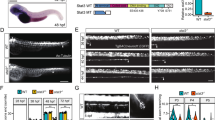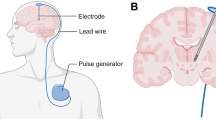Abstract
Spinal cord injury or diseases, such as amyotrophic lateral sclerosis, can cause the loss of motor neurons and therefore results in the paralysis of muscles. Stem cells may improve functional recovery by promoting endogenous regeneration, or by directly replacing neurons. Effective directional migration of grafted neural cells to reconstruct functional connections is crucial in the process. Steady direct current electric fields (EFs) play an important role in the development of the central nervous system. A strong biological effect of EFs is the induction of directional cell migration. In this study, we investigated the guided migration of embryonic stem cell (ESC) derived presumptive motor neurons in an applied EF. The dissociated mouse ESC derived presumptive motor neurons or embryoid bodies were subjected to EFs stimulation and the cell migration was studied. We found that the migration of neural precursors from embryoid bodies was toward cathode pole of applied EFs. Single motor neurons migrated to the cathode of the EFs and reversal of EFs poles reversed their migration direction. The directedness and displacement of cathodal migration became more significant when the field strength was increased from 50 mV/mm to 100 mV/mm. EFs stimulation did not influence the cell migration velocity. Our work suggests that EFs may serve as a guidance cue to direct grafted cell migration in vivo.






Similar content being viewed by others
References
Wichterle, H., Lieberam, I., Porter, J. A., & Jessell, T. M. (2002). Directed differentiation of embryonic stem cells into motor neurons. Cell, 110, 385–397.
Miles, G. B., Yohn, D. C., Wichterle, H., Jessell, T. M., Rafuse, V. F., & Brownstone, R. M. (2004). Functional properties of motoneurons derived from mouse embryonic stem cells. Journal of Neuroscience, 24, 7848–7858.
Wu, C. Y., Whye, D., Mason, R. W., & Wang, W. (2012). Efficient differentiation of mouse embryonic stem cells into motor neurons. Journal of Visualized Experiments, 64, e3813.
Hotary, K. B., & Robinson, K. B. (1990). Endogenous electrical currents and the resultant voltage gradients in the chick embryo. Developmental Biology, 140, 149–160.
Hotary, K. B., & Robinson, K. B. (1991). The neural tube of the Xenopus embryo maintains a potential difference across itself. Brain Research. Developmental Brain Research, 59, 65–73.
McCaig, C. D., Rajnicek, A. M., Song, B., & Zhao, M. (2005). Controlling cell behavior electrically: current views and future potential. Physiological Reviews, 85, 943–978.
Rajnicek, A. M., Foubister, L. E., & McCaig, C. D. (2006). Temporally and spatially coordinated roles for Rho, Rac, Cdc42 and their effectors in growth cone guidance by a physiological electric field. Journal of Cell Science, 119, 1723–1735.
Rajnicek, A. M., Foubister, L. E., & McCaig, C. D. (2006). Growth cone steering by a physiological electric field requires dynamic microtubules, microfilaments and Rac-mediated filopodial asymmetry. Journal of Cell Science, 119, 1736–1745.
Nuccitelli, R. (2003). A role for endogenous electric fields in wound healing. Current Topics in Developmental Biology, 58, 1–26.
McKasson, M. J., Huang, L., & Robinson, K. R. (2008). Chick embryonic Schwann cells migrate anodally in small electrical fields. Experimental Neurology, 211, 585–587.
Borgens, R. B., Blight, A. R., & McGinnis, M. E. (1987). Behavioral recovery induced by applied electric fields after spinal cord hemisection in guinea pig. Science, 238, 366–369.
Meng, X., Arocena, M., Penninger, J., Gage, F. H., Zhao, M., & Song, B. (2011). PI3K mediated electrotaxis of embryonic and adult neural progenitor cells in the presence of growth factors. Experimental Neurology, 227, 210–217.
Zhao, Z., Watt, C., Karystinou, A., Roelofs, A. J., McCaig, C. D., Gibson, I. R., et al. (2011). Directed migration of human bone marrow mesenchymal stem cells in a physiological direct current electric field. European Cells & Materials, 22, 344–358.
Zhang, J., Calafiore, M., Zeng, Q., Zhang, X., Huang, Y., Li, R. A., et al. (2011). Electrically guiding migration of human induced pluripotent stem cells. Stem Cell Reviews, 7, 987–996.
Feng, J. F., Liu, J., Zhang, X. Z., Zhang, L., Jiang, J. Y., Nolta, J., et al. (2012). Guided migration of neural stem cells derived from human embryonic stem cells by an electric field. Stem Cells, 30, 349–355.
Li, L., El-Hayek, Y. H., Liu, B., Chen, Y., Gomez, E., Wu, X., Ning, K., Li, L., Chang, N., Zhang, L., Wang, Z., Hu, X., & Wan, Q. (2008). Direct-current electrical field guides neuronal stem/progenitor cell migration. Stem Cells, 26, 2193–2200.
Yao, L., Shanley, L., McCaig, C., & Zhao, M. (2008). Small applied electric fields guide migration of hippocampal neurons. Journal of Cellular Physiology, 216, 527–535.
Yao, L., McCaig, C. D., & Zhao, M. (2009). Electrical signals polarize neuronal organelles, direct neuron migration, and orient cell division. Hippocampus, 19, 855–868.
Wu, W., Wong, K., Chen, J., Jiang, Z., Dupuis, S., Wu, J. Y., et al. (1999). Directional guidance of neuronal migration in the olfactory system by the protein Slit. Nature, 400, 331–336.
Zhao, M., Agius-Fernandez, A., Forrester, J. V., & McCaig, C. D. (1996). Orientation and directed migration of cultured corneal epithelial cells in small electric fields are serum dependent. Journal of Cell Science, 109, 1405–1414.
Zhu, Y., Yu, T., Zhang, X. C., Nagasawa, T., Wu, J. Y., & Rao, Y. (2002). Role of the chemokine SDF-1 as the meningeal attractant for embryonic cerebellar neurons. Nature Neuroscience, 5, 719–720.
Ward, M., McCann, C., DeWulf, M., Wu, J. Y., & Rao, Y. (2003). Distinguishing between directional guidance and motility regulation in neuronal migration. Journal of Neuroscience, 23, 5170–5177.
Naegele, R. J., Lipari, J., Chakkalakal, D., Strates, B., & McGuire, M. (1991). Electric field stimulation of human osteosarcoma-derived cells: a dose-response study. Cancer Biochemistry Biophysics, 12, 95–101.
Nishimura, K. Y., Isseroff, R. R., & Nuccitelli, R. (1996). Human keratinocytes migrate to the negative pole in direct current electric fields comparable to those measured in mammalian wounds. Journal of Cell Science, 109, 199–207.
Chao, P. H., Roy, R., Mauck, R. L., Liu, W., Valhmu, W. B., & Hung, C. T. (2000). Chondrocyte translocation response to direct current electric fields. Journal of Biomechanical Engineering, 122, 261–267.
Farboud, B., Nuccitelli, R., Schwab, I. R., & Isseroff, R. R. (2000). DC electric fields induce rapid directional migration in cultured human corneal epithelial cells. Experimental Eye Research, 70, 667–673.
Wang, E., Zhao, M., Forrester, J. V., & MCCaig, C. D. (2000). Re-orientation and faster, directed migration of lens epithelial cells in a physiological electric field. Experimental Eye Research, 71, 91–98.
Dayer, A. G., Jenny, B., Sauvain, M. O., Potter, G., Salmon, P., Zgraggen, et al. (2007). Expression of FGF-2 in neural progenitor cells enhances their potential for cellular brain repair in the rodent cortex. Brain, 130, 2962–2976.
Acknowledgements
This work was supported by Li Yao’s start-up funding, Wichita State University and National Center for Research Resources (P20 RR016475) and the National Institute of General Medical Sciences (P20 GM103418) from the National Institutes of Health. MLW’s laboratory is supported by the State of Kansas to the Midwest Institute of Comparative Stem Cell Biology, NSF Award: 1321261, NIH R01AR056347, the Dean’s office of the Kansas State University’s College of Veterinary Medicine, and gifts from Ronald Deffenbaugh Foundation and the Northeast Kansas Parkinson’s Association Research Fund. We acknowledge James Hong, Dr. Pavan Rajanahalli, and Dr. Hong He for advice and technical support.
Conflict of interest
The authors indicate no potential conflicts of interest.
Author information
Authors and Affiliations
Corresponding author
Electronic supplementary material
Below is the link to the electronic supplementary material.
Supplemental figure 1
Orientation of the cells that migrated out of the EBs. The EBs were labelled with anti-nestin antibody (green) and Rhodamine Phalloidin (red). (A, B) The cells that migrated out the EB without EFs stimulation appeared to be randomly oriented.(C, D) In contrast, in EFs, the cells that migrated out of the EB margins showed a clear re-orientation: On the cathode-facing side (right), most cells migrated parallel to the field line of EFs. On the anode-facing side (left), most cells oriented perpendicular to the field line of EFs. (GIF 120 kb)
Supplemental figure 2
Frequency distribution of the angles. The histograms show the frequency distribution of the angles of the cells after the first hour and the second hour of migration. In the first hour, time-lapse images recorded the random migration of the cells. In the second hour, time-lapse images recorded either the apparent random migration of the cells (figure A, control) or the directed cell migration in response to an applied EF (figure B, 50mV/mm; figure C, 100mV/mm). The positions of the cells after migrating for 1 hour in an EF fall within the given 20° sectors with respect to the direction of the imposed EFs (0°). Since this response is symmetrical about the 0-180° axis, the number of cells in each 20° sector between 20° and 160° is added with the number of cells in the symmetrical sector on the opposite side of the y axis and the total number was plotted. The cell number in the sectors centered on 0° and 180° represent the absolute number of cells in their respective 20° sectors (GIF 26 kb)
ESM 1
(AVI 635 kb)
ESM 2
(AVI 683 kb)
ESM 3
(AVI 274 kb)
ESM 4
(AVI 319 kb)
Rights and permissions
About this article
Cite this article
Li, Y., Weiss, M. & Yao, L. Directed Migration of Embryonic Stem Cell-derived Neural Cells In An Applied Electric Field. Stem Cell Rev and Rep 10, 653–662 (2014). https://doi.org/10.1007/s12015-014-9518-z
Published:
Issue Date:
DOI: https://doi.org/10.1007/s12015-014-9518-z




